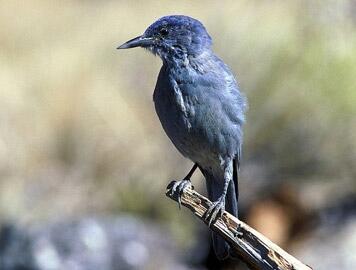Pinyon Jay

Detailed Description
Pinyon jays coevolved as non-migratory mutualists with pinyon pines. Jays disperse the large wingless seed of pinyon pines over long distances, which can result in relatively rapid colonization. At the same time, the jays obtain energy and nutrients from the seeds. Although closely associated with pinyon pines in most areas, in parts of its range pinyon jays inhabit ponderosa pine (Pinus ponderosa) and Jeffrey pine (P. jeffreyi) forests. During some years, especially when pinyon pine cones are rare or absent, jays harvest and cache large numbers of ponderosa or Jeffrey pine seeds. Pinyon jays prefer to cache seeds at the base of large trees, boulders, or at the base of cliffs, where less snow accumulates and where the snow that does accumulate melts more rapidly. Pinyon jays may assess insolation when nest building, as in northern Arizona where >50% of nests are located on the south-facing sides of trees. Females in south-facing nests receive up to 40% more solar energy compared to females in north-facing nests, which matters, because pinyon jays are among the earliest nesting passerines in the United States.
Sources/Usage
Public Domain.

